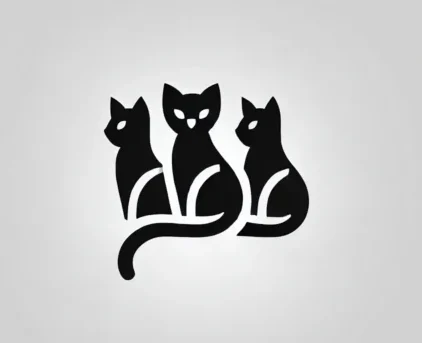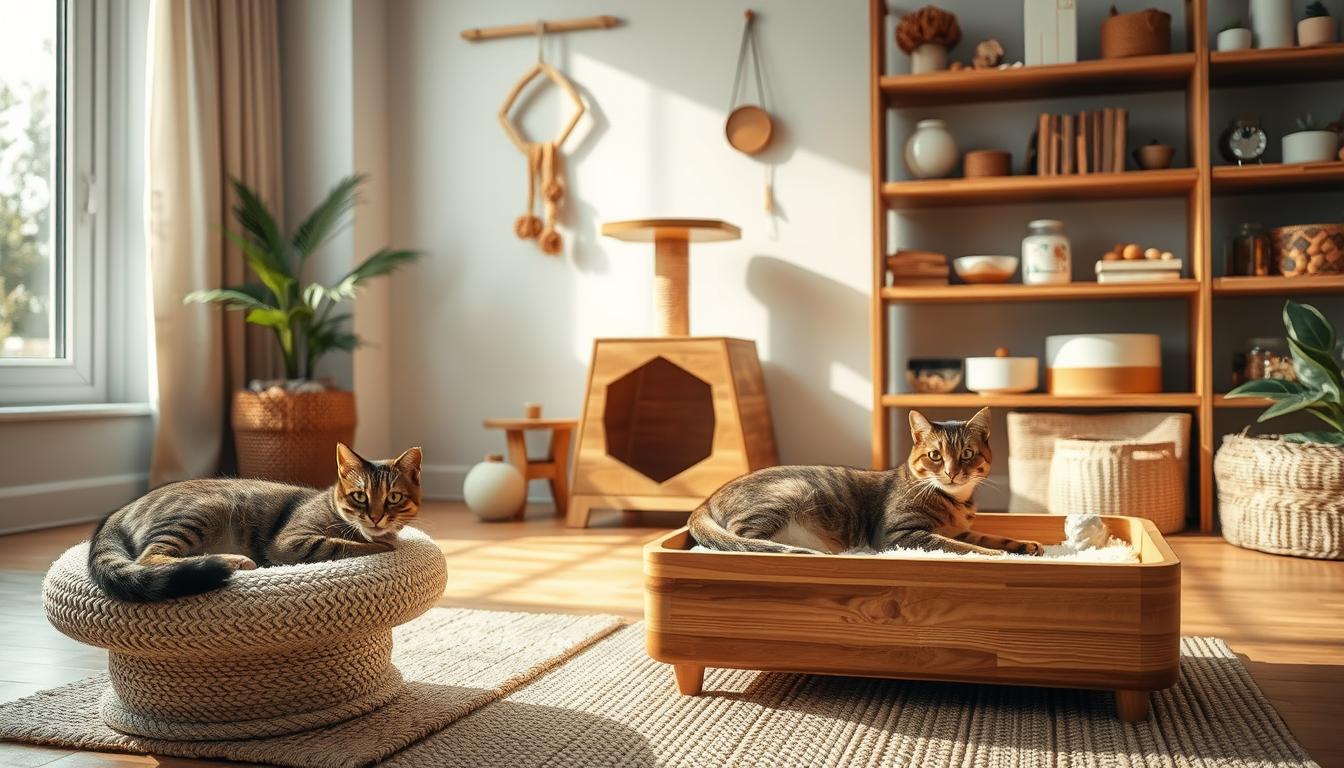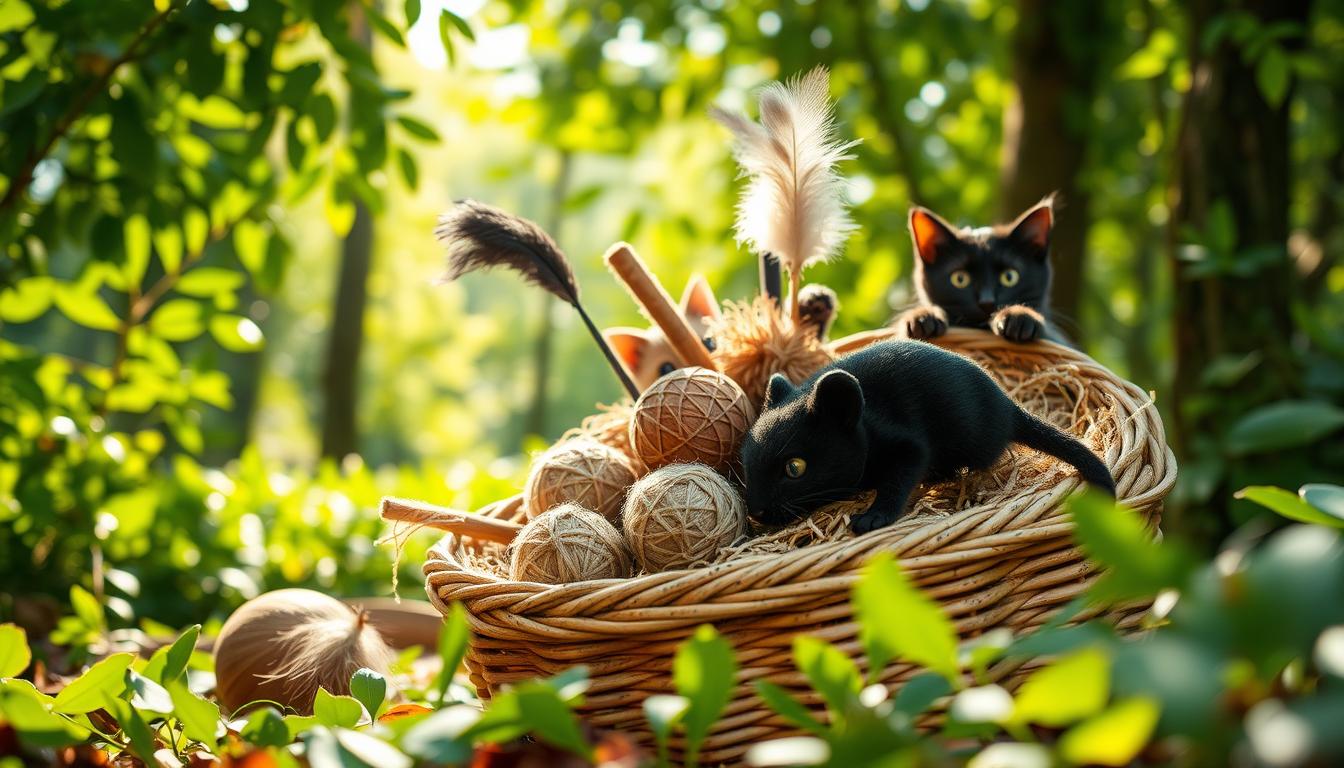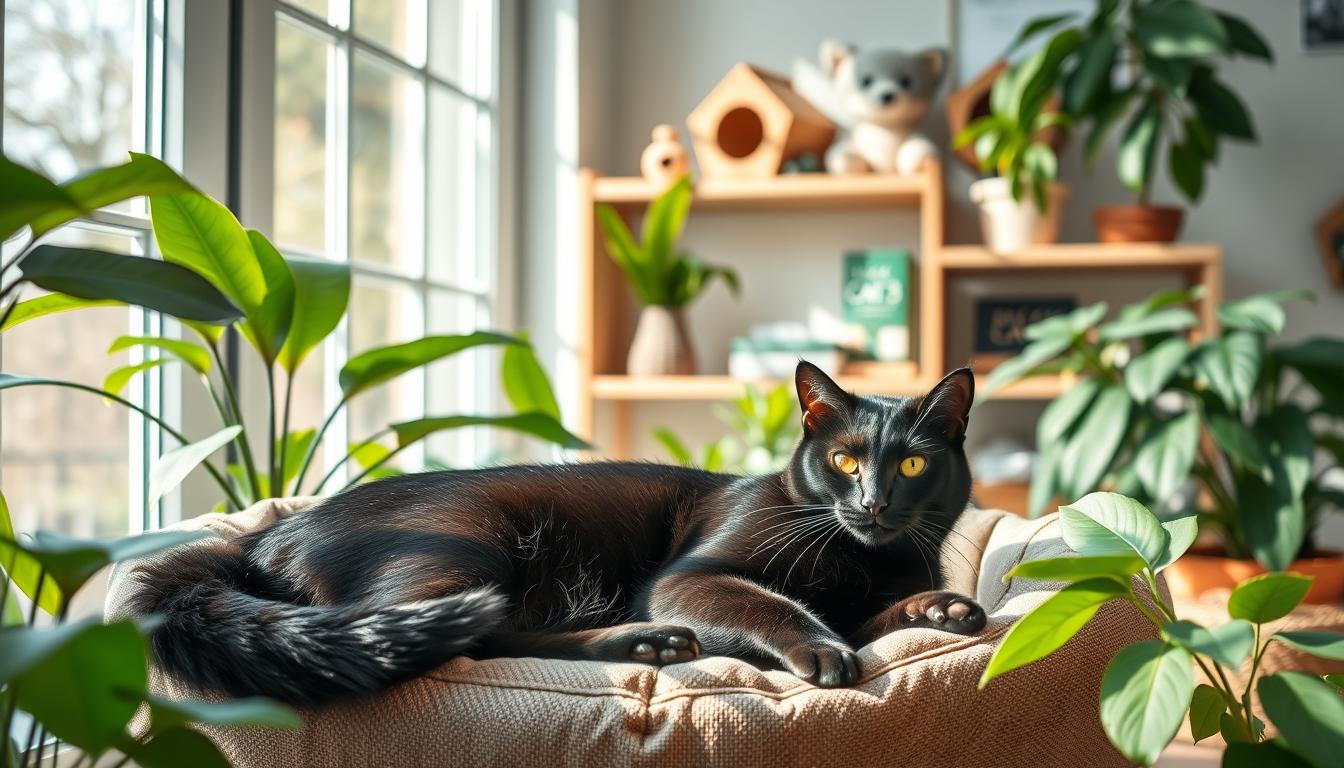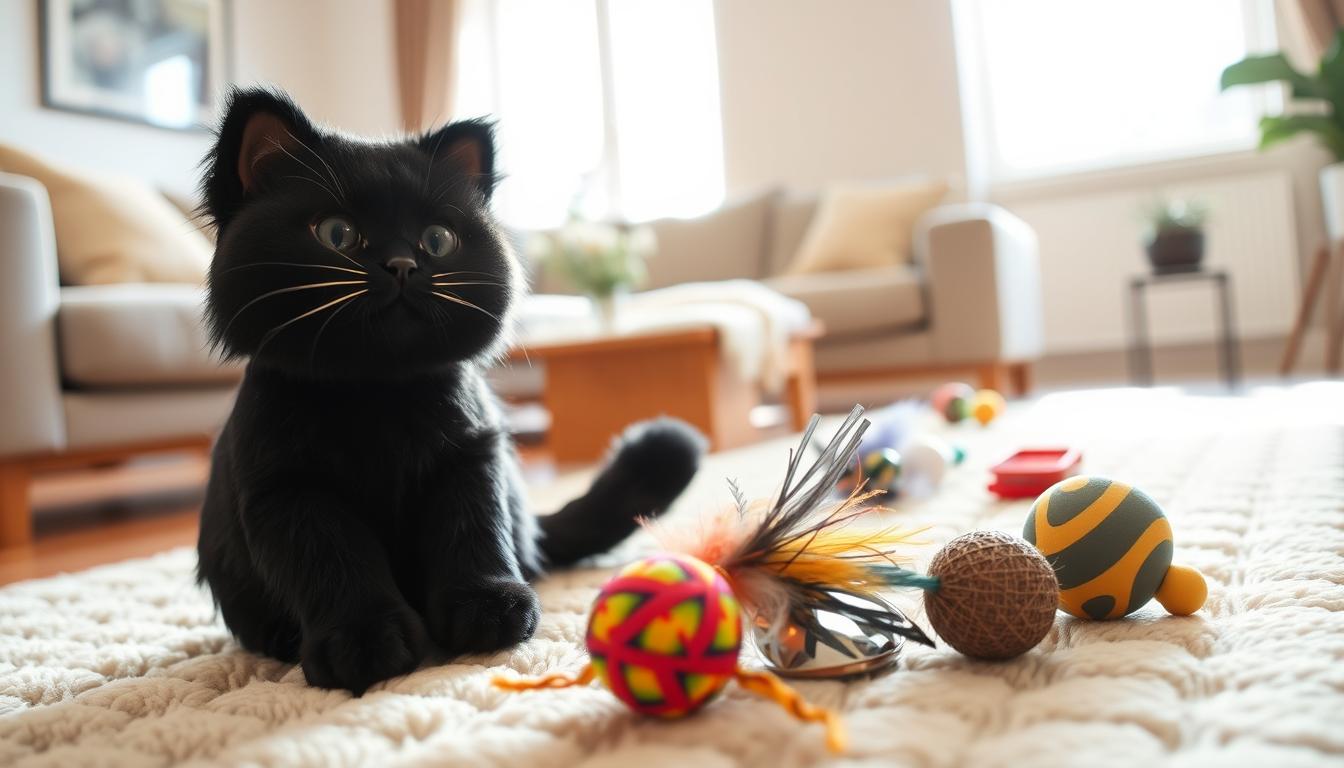Mia never thought much about her cat’s carbon pawprint until one rainy afternoon. While cleaning up yet another plastic-lined litter bag, she paused. “What if small changes could help my pet and the planet?” That question sparked a journey toward sustainable choices—bulk food bins, reusable toys, and recycling programs that turned “trash” into treasure.
Like Mia, many pet lovers are discovering how simple swaps can create big impacts. Brands like Wellness and Open Farm now partner with TerraCycle to recycle packaging, while biodegradable litters keep landfills cleaner. Choosing durable bowls or toys means fewer broken items tossed away—good for wallets and ecosystems.
This isn’t just about reducing trash. It’s about nurturing pets with kindness that ripples outward. Every eco-friendly decision—a bulk-bought treat, a repurposed scratching post—adds up. Together, these steps weave a greener story for our furry companions.
Key Takeaways
- Small sustainable swaps benefit pets and the environment.
- Bulk buying reduces packaging waste for food and treats.
- Recycling programs like TerraCycle help manage pet product packaging.
- Durable items last longer, saving money and resources.
- Biodegradable litters minimize landfill contributions.
Introduction to Sustainable Cat Ownership
Lila’s family found that caring for their tabby could also mean caring for the earth. Sustainable pet care means making choices that keep cats healthy while protecting the environment. It’s like planting seeds: small actions today grow into bigger benefits tomorrow.
One easy change? Switching to plant-based cat litter. Traditional clay options take centuries to break down. But litters made from corn or walnut shells decompose faster. “It’s softer on paws and gentler on the planet,” says Lila’s mom, who uses biodegradable brands.
| Litter Type | Breakdown Time | Eco-Friendly? |
|---|---|---|
| Clay | 500+ years | No |
| Corn | 3 months | Yes |
| Walnut | 6 months | Yes |
Families can involve kids too! Let them help pick toys made from recycled fabrics. Check labels for phrases like “compostable” or “plastic-free.” Even storing kibble in glass jars cuts plastic use.
Every choice matters. Whether it’s a bamboo brush or a secondhand bed, these steps create cleaner air and happier homes. And that’s something pawsitive for everyone.
Sustainable Feeding Practices for a Greener Cat Diet
Jasmine discovered a secret while shopping for her tabby’s meals. Large bags of cat food meant fewer plastic pouches cluttering her pantry. “Bigger packages stay fresher longer,” she told her neighbor, showing how airtight containers lock in flavor.
Smart Shopping Saves Resources
Buying in bulk cuts packaging by up to 70%, according to eco-conscious brands like Open Farm. Look for pet food companies using recyclable bags or offering take-back programs. Some even donate meals to shelters for every purchase!
| Bulk Size | Packaging | Waste Saved |
|---|---|---|
| 5 lbs | 1 bag | 4 small pouches |
| 10 lbs | 1 bag | 8 small pouches |
| 15 lbs | 1 bag | 12 small pouches |
Kitchen Adventures With Pets
Mixing cooked chicken with vet-approved ingredients creates tasty homemade meals. “Always balance proteins and vitamins,” advises Dr. Rivera, a feline nutritionist. Sharing plain salmon bits from your dinner plate? That’s one less can to recycle!
Families love turning meal prep into bonding time. Kids can wash sweet potatoes while parents chop lean meats. Just remember: sudden diet changes need professional guidance to keep tails wagging happily.
Zero waste cat care: Managing Waste Effectively
Emma’s dad showed her how orange peels could turn into garden magic. “Composting helps plants grow,” he explained, stirring a bin of kitchen scraps. When their tabby’s clay litter piled up, Emma asked, “Can we make cat waste disappear like banana peels?” That question led them to explore earth-friendly solutions.
Eco-Friendly Litter and Waste Disposal Options
Traditional clay litters take centuries to decompose. Switching to plant-based options like wheat or pine breaks down faster. “Biodegradable bags are safer for soil,” says urban gardener Rosa Perez. Some brands even offer compostable liners that dissolve in 90 days.
| Disposal Method | Time to Break Down | Safe for Gardens? |
|---|---|---|
| Plastic Bags | 1000 years | No |
| Cornstarch Bags | 3 months | Yes |
| Paper Containers | 2 months | Yes |
Composting requires care. Always use a separate bin for pet materials to avoid spreading germs. Mix using litter with yard waste to balance nutrients. Local farms sometimes collect organic scraps—check community boards!
Strategies for Minimizing Packaging Waste
Bulk-bought kibble cuts plastic use by 60%. Store snacks in glass jars with chalkboard labels. “Reusable containers stay fresher than flimsy packaging,” notes TerraCycle’s pet program guide. Many shops now refill containers for free.
| Item | Standard Packaging | Eco Swap |
|---|---|---|
| Food | Plastic pouches | Cloth bags |
| Treats | Crinkly wrappers | Metal tins |
| Toys | Bubble wrap | Recycled paper |
Families can turn recycling into a game. Let kids sort cardboard tubes from treats or rinse empty cans. Every small act builds greener habits—for paws and people alike.
Eco-Friendly Litter Solutions and Accessories
Mr. Thompson, a science teacher, noticed his students’ curiosity about composting. “Why not apply these ideas to pet care?” he wondered. This led him to explore earth-friendly ways to manage feline bathroom habits while protecting ecosystems.
Choosing Natural and Bulk Litter Options
Traditional clay litters create mountains of non-biodegradable waste. Switching to plant-based materials like corn or recycled paper makes cleanup kinder to soil. “These options break down faster and produce less dust,” explains eco-designer Lena Cho.
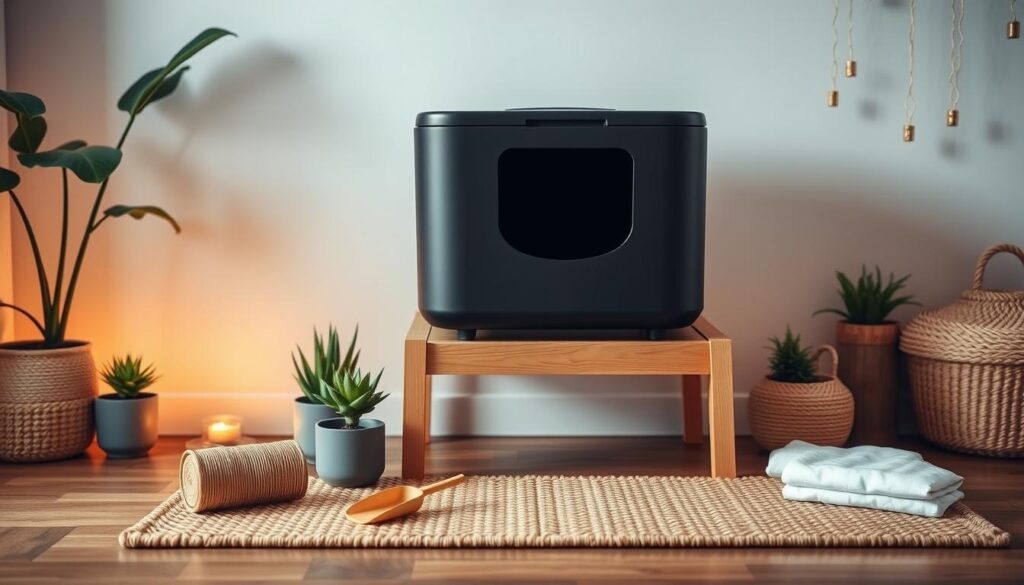
| Material | Breakdown Time | Dust Level |
|---|---|---|
| Clay | 500+ years | High |
| Corn | 3 months | Low |
| Recycled Paper | 1 month | None |
Buying larger box sizes reduces packaging trips. Stores like Petco now offer bulk refill stations for loose litter. “Families save money and cut plastic use by 40%,” shares manager Diego Ramos.
Innovative Litter Boxes and Scooping Tools
Ditch flimsy plastic trays for boxes made from bamboo or recycled rubber. Stainless steel scoopers last years instead of months. “Metal tools don’t absorb odors like cheap products,” notes veterinarian Dr. Ellen Park.
| Accessory | Standard Material | Eco Upgrade |
|---|---|---|
| Box | Plastic | Bamboo |
| Scooper | Plastic | Stainless Steel |
| Liners | Plastic Bags | Compostable Paper |
Three steps make switching simple:
- Test small bags of new litter types
- Measure your space before choosing a box size
- Wash metal tools with vinegar for sparkle
Every sustainable swap helps paws tread lightly. From grain-based clumps to odor-free materials, these choices keep homes fresh and landfills emptier.
Water and Hydration Strategies for Eco-Conscious Cat Owners
Ms. Harper, a biology teacher, noticed her tabby drinking more from the bathroom faucet than her plastic bowl. “Why buy bottled water when our tap is just as good?” she wondered. This observation led her to explore earth-friendly hydration ways that keep pets healthy while conserving resources.
Benefits of Tap Water and Filtration Options
Municipal water undergoes strict safety checks, making it a reliable choice. “Filters remove chlorine taste without plastic bottles,” explains vet Dr. Amy Singh. Simple home solutions like letting water sit overnight allow chemicals to evaporate naturally.
| Filtration Method | Setup Time | Cost |
|---|---|---|
| Charcoal sticks | 2 minutes | $10/year |
| Ceramic filters | 5 minutes | $25/year |
| Boiling & cooling | 20 minutes | Free |
Stainless steel bowls stay cleaner than plastic ones. They’re dishwasher-safe, saving time and reducing soap use. For multi-pet homes, gravity-fed systems provide fresh flows without electricity.
Changing water twice daily prevents bacterial growth. Use old hydration liquid for houseplants—it’s a home recycling hack that nourishes greenery. Set phone reminders to maintain routines effortlessly.
Healthy habits start with clean sips. By choosing tap over bottled and durable containers over disposable ones, families create ripple effects. Every fresh drop supports playful paws and a thriving planet.
Creative DIY Projects: Upcycled Cat Toys and Furniture
Sam’s kitten pounced on an empty paper towel roll one morning, batting it across the kitchen. “Why buy new toys when we can make them?” she realized. This sparked a weekend of crafting adventures using forgotten items from drawers and closets.
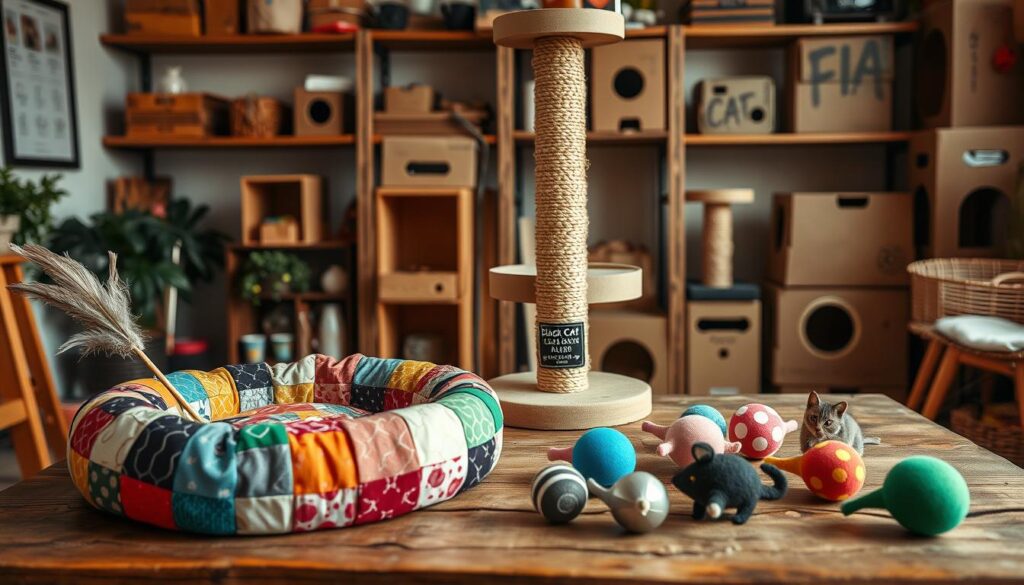
Crafting Engaging Cat Toys from Household Items
Old t-shirts transform into braided ropes with three snips of scissors. Stuff fabric scraps into sock ends for crinkly kickers. “Cardboard boxes become castles with cut-out windows,” shares neighbor Clara, whose tabby plays hide-and-seek in upcycled forts.
| Material | Toy Idea | Prep Time |
|---|---|---|
| T-shirts | Braided ropes | 5 minutes |
| Paper rolls | Treat dispensers | 2 minutes |
| Wine corks | Mini chase balls | 1 minute |
Designing Sustainable Cat Beds and Scratch Posts
An old sweater stuffed with shredded paper makes a cozy nap spot. Nail scrap wood pieces into ladder shapes for climbing options. “Our cat’s favorite scratcher is a log wrapped in sisal rope,” says carpenter Ben Torres.
| Item | Upcycled Use | Durability |
|---|---|---|
| Sweaters | Beds | 6+ months |
| Pallets | Climbing towers | Years |
| Carpet scraps | Scratch pads | 1 year |
Families can host crafting parties—kids decorate cardboard houses with non-toxic paints. Bake oat-and-tuna treats in silicone molds while toys dry. Every project becomes memory-making that’s kind to wallets and ecosystems.
Sustainable Grooming and Health Care Practices
Dr. Patel smiled as she unwrapped a shampoo bar at the community pet fair. “Natural ingredients keep coats shiny without harsh chemicals,” she told curious families. This moment highlighted how simple swaps in pet care routines protect both health and habitats.
Gentle Cleaning for Happy Coats
Plant-based shampoo bars from brands like Burt’s Bees clean fur using oatmeal and coconut oil. “They’re kinder to skin and reduce plastic bottle waste,” explains groomer Marco Silva. Traditional shampoos often contain sulfates that irritate paws and pollute waterways.
| Product | Ingredients | Packaging |
|---|---|---|
| Standard Shampoo | Sulfates, parabens | Plastic bottle |
| Shampoo Bar | Oatmeal, aloe | Compostable wrap |
| DIY Rinse | Apple cider vinegar | Reused spray bottle |
Preventing Problems Before They Start
Regular vet visits catch issues early, saving resources long-term. “Spaying prevents overpopulation strains on shelters,” notes Dr. Ellen Cho from Paws for Life. Many clinics offer low-cost programs for neutering and vaccinations.
Three earth-friendly tips for families:
- Brush pets weekly to reduce shedding and hairballs
- Use cedar oil sprays instead of chemical flea collars
- Donate old towels to animal shelters for bedding
Local farms sometimes host health workshops teaching herbal remedies. “Learning to make chamomile paw soaks became our favorite Saturday activity,” shares mom Lina Reyes. These small acts weave safety into every purr and pounce.
Responsible Cat Ownership and Community Impact
At a sunny weekend adoption fair, volunteers cheered as a striped kitten found her forever home. Choosing to welcome shelter animals creates ripples of kindness—for pets, people, and the planet. Small things, like saying “yes” to adoption forms, shape healthier communities.
Adopt, Don’t Shop: Making a Positive Difference
Shelters overflow with loving animals waiting for second chances. “Every adoption saves life and resources,” explains Mara Holt, director of PawsForward Rescue. Breeders often use plastic-lined crates and disposable supplies, while shelters prioritize recycled paper forms and donated blankets.
| Option | Shelter Adoption | Breeder Purchase |
|---|---|---|
| Cost | $50–$150 | $500–$2000 |
| Materials Used | Reused carriers, paper forms | New plastic toys, shipping boxes |
| Community Impact | Supports local programs | Increases commercial demand |
Environmental Benefits of Reducing Overpopulation
Fewer stray animals mean less strain on landfills from discarded food cans and waste. Groups like GreenPaws Alliance use compostable paper litter in their facilities. “Spaying one feline prevents thousands of unwanted kittens over a lifetime,” notes vet Dr. Sonia Patel.
Three simple things families can do:
- Opt for digital adoption records instead of printed paper
- Donate old towels to shelters as bedding
- Share social media posts about adoptable pets
Every choice matters. Whether selecting the eco-friendly option for pet supplies or volunteering at clean-up events, these steps nurture happier pets and greener neighborhoods. Together, we build a world where every purr echoes care.
Conclusion
One afternoon, the Carter family gathered to brainstorm ways their tabby could live greener. “Even small changes matter,” said Mom, holding a compostable bag of chicken-based treats. Their journey showed how everyday choices shape healthier homes and habitats.
Switching to bulk food bins and DIY toys cuts plastic use. Choosing plant-based litters helps poop break down safely. Over years, these steps create cleaner soil and air—proof that tiny acts spark big difference.
Local stores now stock bamboo brushes and recycled carriers. “Supporting them builds stronger neighborhoods,” notes Dad, who shops at eco-friendly pet shops. Families can join community compost programs to manage waste wisely.
Every sustainable choice—whether baking chicken snacks or using cornstarch poop bags—adds up. Together, we nurture playful paws and a thriving planet. Because caring responsibly today means brighter tomorrows for all.
